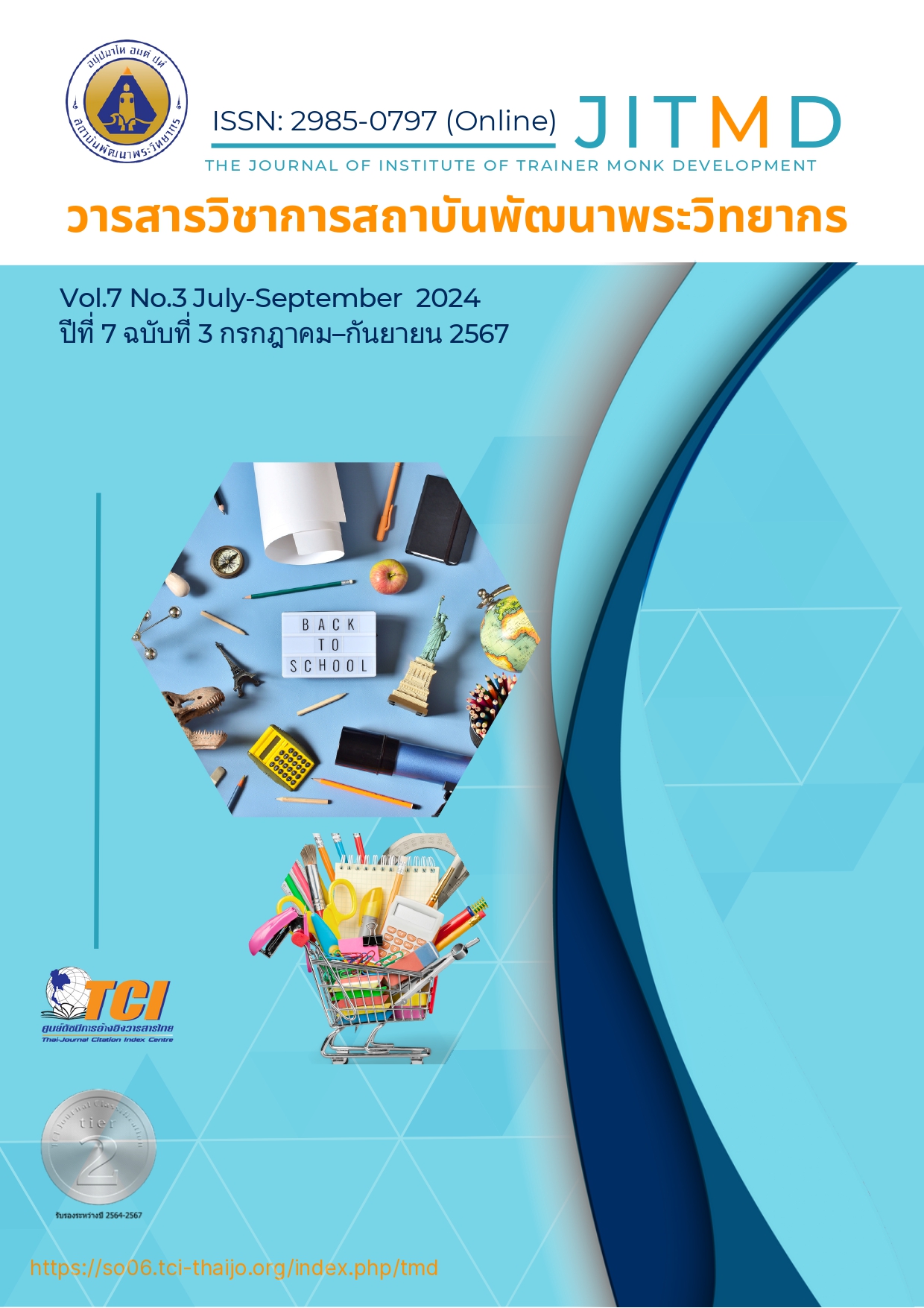Instructional Leadership of Administrators and Internal Quality Assurance in School Under the Secondary Educational Service Area Office Bangkok 1
Main Article Content
Abstract
The research objectives were to determine 1) instruction leadership of administrators under the Secondary Educational Service Area Office Bangkok 1 2) the internal quality assurance in schools under the Secondary Educational Service Area Office Bangkok 1 and 3) the relationship between instruction leadership of administrators and internal quality assurance in schools affiliated with the Secondary Educational Service Area Office Bangkok 1. The sample were schools under the Secondary Educational Service Area Office Bangkok 1. The research instruments were an opinionnaire about the instructional leadership based on the concept of (Blase, J. and Blase J.). The statistical used were frequency, percentage, arithmetic mean, standard deviation, and Pearson’s product-moment correlation coefficient. The results of this research were as follows: 1. Instruction leadership of school administrator under the Secondary Educational Service Area Office Bangkok 1 as a whole, was found at a high level; when consider each aspect individually; 1 aspect were found at the highest level. While 10 aspects were found at high level. 2. The internal quality assurance in schools under The Secondary Educational Service Area Office Bangkok 1 as a whole and each aspect were at a high level. The arithmetic mean ranking from the highest to the lowest were as follows; establish school educational standards, self-assessment reporting, evaluating and inspecting educational quality within schools, developing school education management plans, monitoring the progress for school improvement, and executing the school's education management plan respectively. 3. There was a significant relationship between instruction leadership of administrators and the internal quality assurance in schools under The Secondary Educational Service Area Office Bangkok 1 at .01 level.
Article Details

This work is licensed under a Creative Commons Attribution-NonCommercial-NoDerivatives 4.0 International License.
บทความที่ได้รับการตีพิมพ์เป็นลิขสิทธิ์ของวารสารวิชาการสถาบันพัฒนาพระวิทยากร
ข้อความที่ปรากฎอยู่ในบทความที่ได้รับการตีพิมพ์ในวารสาร ถือเป็นความรับผิดชอบของผู้เขียนบทความ และข้อคิดเห็นนั้นไม่ถือว่าเป็นทัศนะและความรับผิดชอบของกองบรรณาธิการวารสารวิชาการสถาบันพัฒนาพระวิทยากร
References
กรองกาญจน์ อรุณเมฆ. (2565). “ภาวะผู้นำทางวิชาการของผู้บริหารที่ส่งผลต่อการเป็นองค์การแห่งการเรียนรู้ในสถานศึกษาสังกัด สำนักงานเขตพื้นที่การศึกษามัธยมศึกษา เขต 9”. วารสารวิชาการสถาบันพัฒนาพระวิทยากร, 5(3): 14 -26.
กิตติยา พิลาจันทร์ และวิทร วิภาหัสน์. (2563). “การศึกษาความสัมพันธระหวางการมีสวนรวมในการบริหารสถานศึกษาของครูผูสอนกับการประกันคุณภาพภายในสถานศึกษา สังกัดสํานักงานเขตพื้นที่การศึกษามัธยมศึกษา เขต 20”. วารสารวิชาการวิทยาลัยสันตพล, 6(2): 52-63.
จารุกิตติ์ สุดสุข. (2566). “สภาพการดําเนินงานประกันคุณภาพภายในสถานศึกษายุคดิจิทัล สังกัดสำนักงานเขตพื้นที่การศึกษามัธยมศึกษาอุบลราชธานี อำนาจเจริญ”. วารสารพุทธปรัชญาวิวัฒน์, 7(1): 348-358.
ณพัฐธิกา ปิติเลิศศิริกุล และนิรุทธ์ นันทมาศวังนรา. (2564). “ภาวะผู้นำทางวิชาการของผู้บริหารสถานศึกษาที่ส่งผลต่อประสิทธิผลการประกันคุณภาพภายในของสถานศึกษา โรงเรียนกลุ่มบันนังสตา สังกัดสำนักเขตพื้นที่การศึกษาประถมศึกษายะลา เขต 2.” วารสารรัชตภาคย์, 15(39): 137-148.
ธิตาพร ตันเจริญรัตน์. (2565). “ภาวะผู้นำทางวิชาการของผู้บริหารกับทักษะของครูในศตวรรษที่ 21 ในสถานศึกษาสังกัดสำนักงานเขตพื้นที่การศึกษามัธยมศึกษา เขต 8”. วารสารสิรินธรปริทรรศน์, 23(1): 192-204.
สำนักทดสอบทางการศึกษา สำนักงานคณะกรรมการการศึกษาขั้นพื้นฐาน. (2563). แนวทางการพัฒนาระบบการประกันคุณภาพการศึกษาตามกฎกระทรวงการประกันคุณภาพการศึกษา พ.ศ. 2561. กรุงเทพมหานคร: ห้างหุ้นส่วนจำกัด เอ็น,เอ.รัตนะเทรดดิ้ง.
อรรถพล ประเสริฐสังข์ และคณะ. (2566). “ภาวะผู้นำทางวิชาการของผู้บริหารสถานศึกษาที่ส่งผลต่อประสิทธิผลการจัดการเรียนรูในโรงเรียน สังกัดสำนักงานเขตพื้นที่การศึกษาประถมศึกษาสกลนคร เขต 1”. วารสารการบริหารการศึกษาและภาวะผู้นำ มหาวิทยาลัยราชภัฏสกลนคร, 11(44): 32–41.
Blase Jo and Blase Joseph. (2004), Handbook of Instructional Leadership: How Successful Principals Promote Teaching and Learning. California: Thousand.
Gentilucci W. and Muto R. (2007). Lessons from the cyberspace classroom: The realities of online teaching. San Francisco: Jossey-Bass.
Krejcie, R.V., & Morgan, D.W. (1970). Determining Sample Size for Research Activities. Educational and Psychological Measurement, (30)(3): 607-610.


